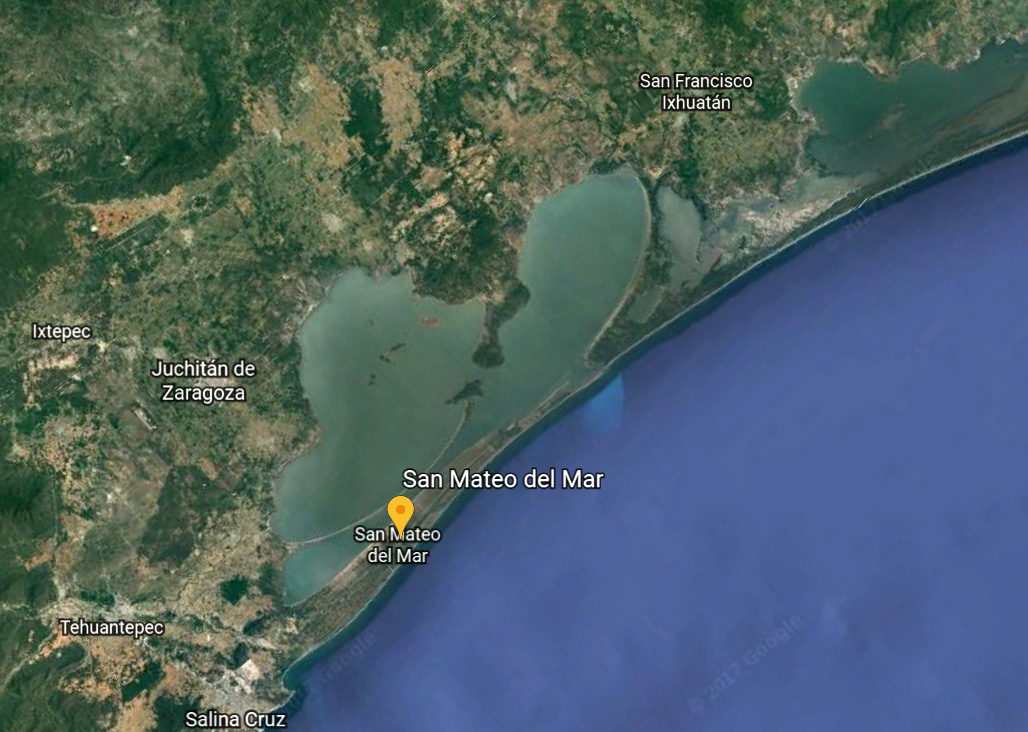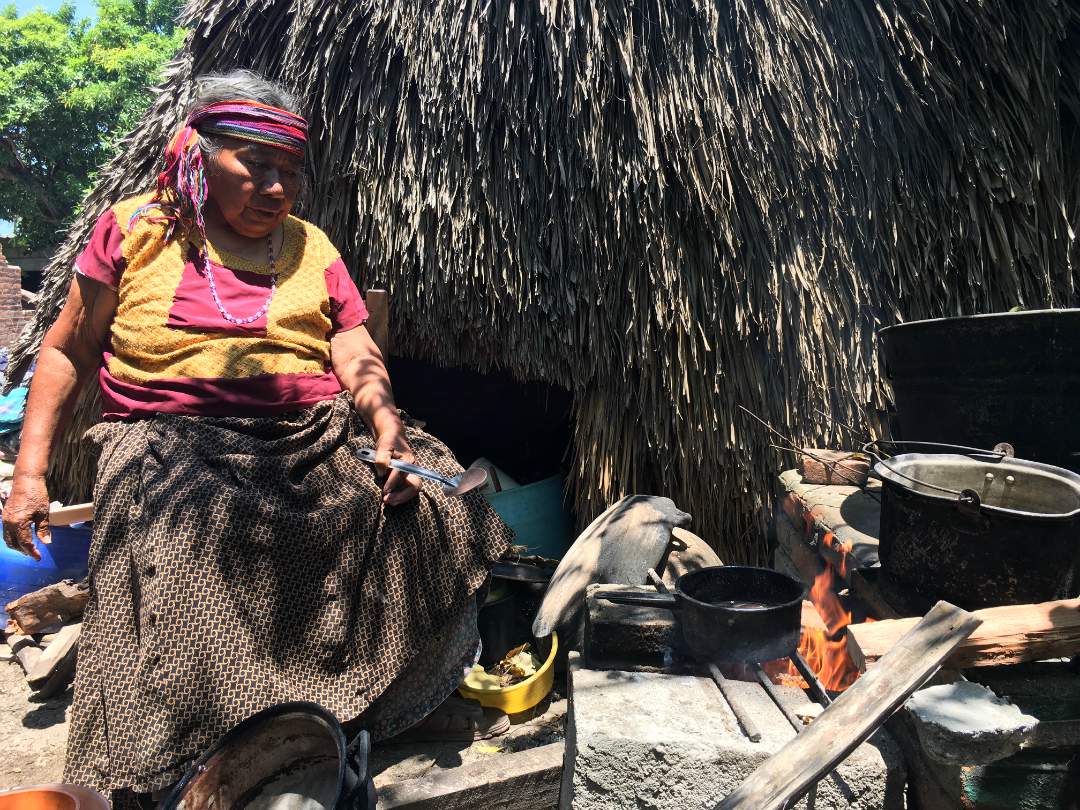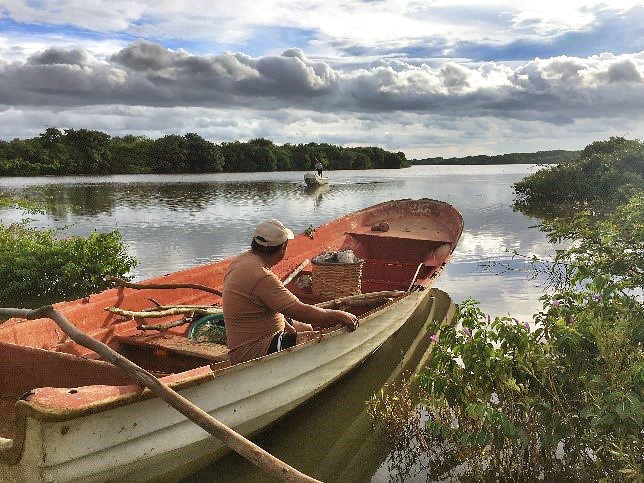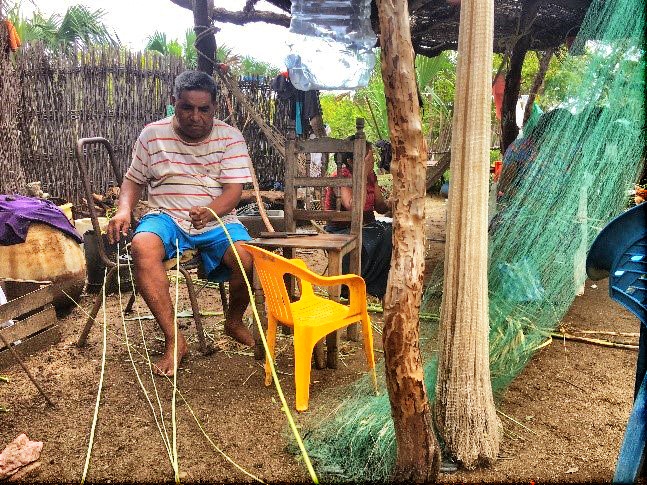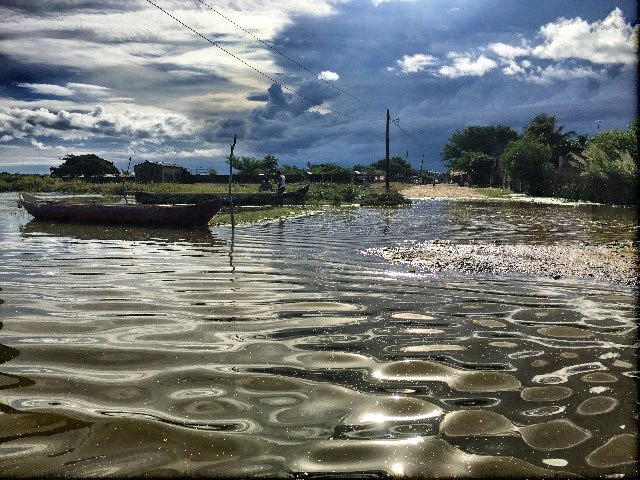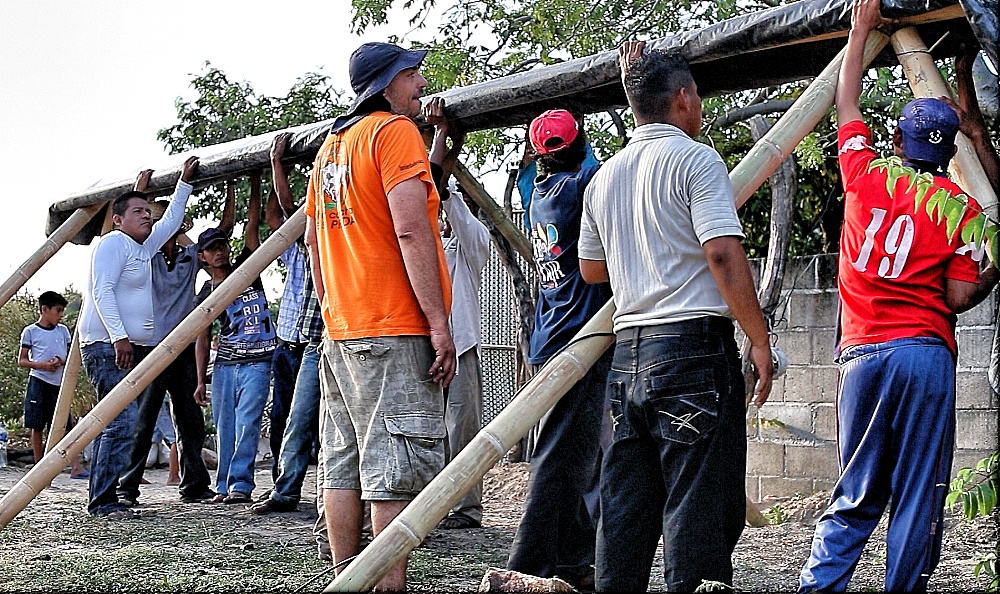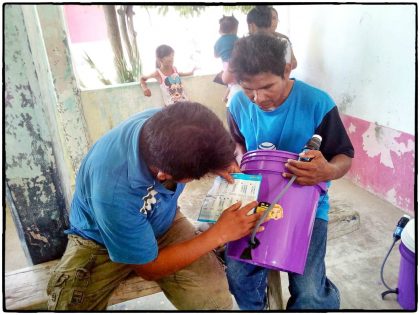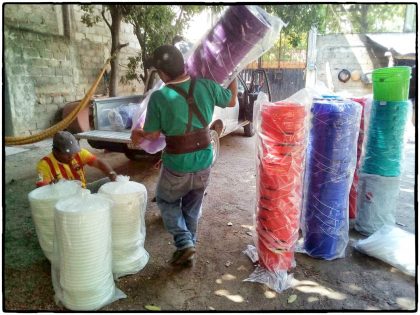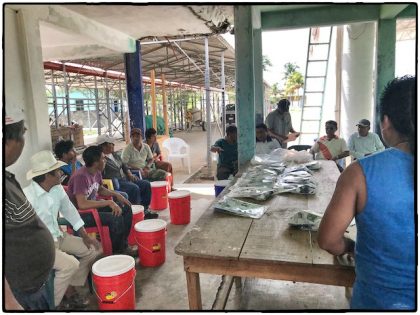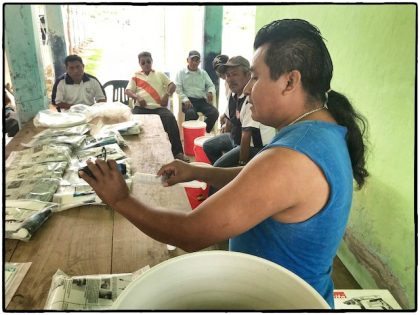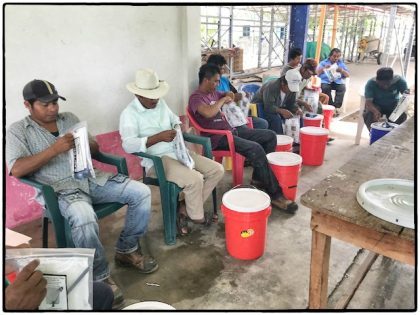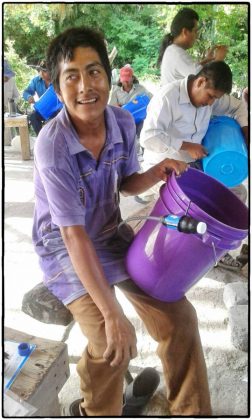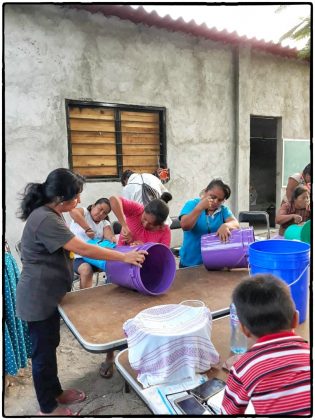This project is made possible by the partnership of Water Charity & the National Peace Corps Association. ![]()

*This project was successfully completed and made a difference for many people. Read the #Conclusion Report below*
A massive earthquake off the Pacific Coast of Mexico in September of 2017 caused widespread damage, and many people were killed in this region. There was a lot of press and a good deal of aid directed to Mexico City, rightly so, but many people failed to realize that people closer to the epicenter were being ignored by and large. Due to the work of volunteer Denise Lechner, Water Charity has been able to put together this project to help the still-struggling people of South-Eastern Oaxaca. She is to be aided in this effort by our Project Base friends Nate and Sam, who have raised some of the money for this project already.
This project is part of our worldwide Filters For Life Program which involves the use of fabulous, life-saving Sawyer Filters.
LOCATION
San Mateo del Mar is located on a sandy ridge between the Pacific Ocean and the “Laguna Superior” (Superior Lagoon) in the area of Oaxaca State known as the Tehuantepec Isthmus. This is the southernmost area of the state, bordering with Chiapas.
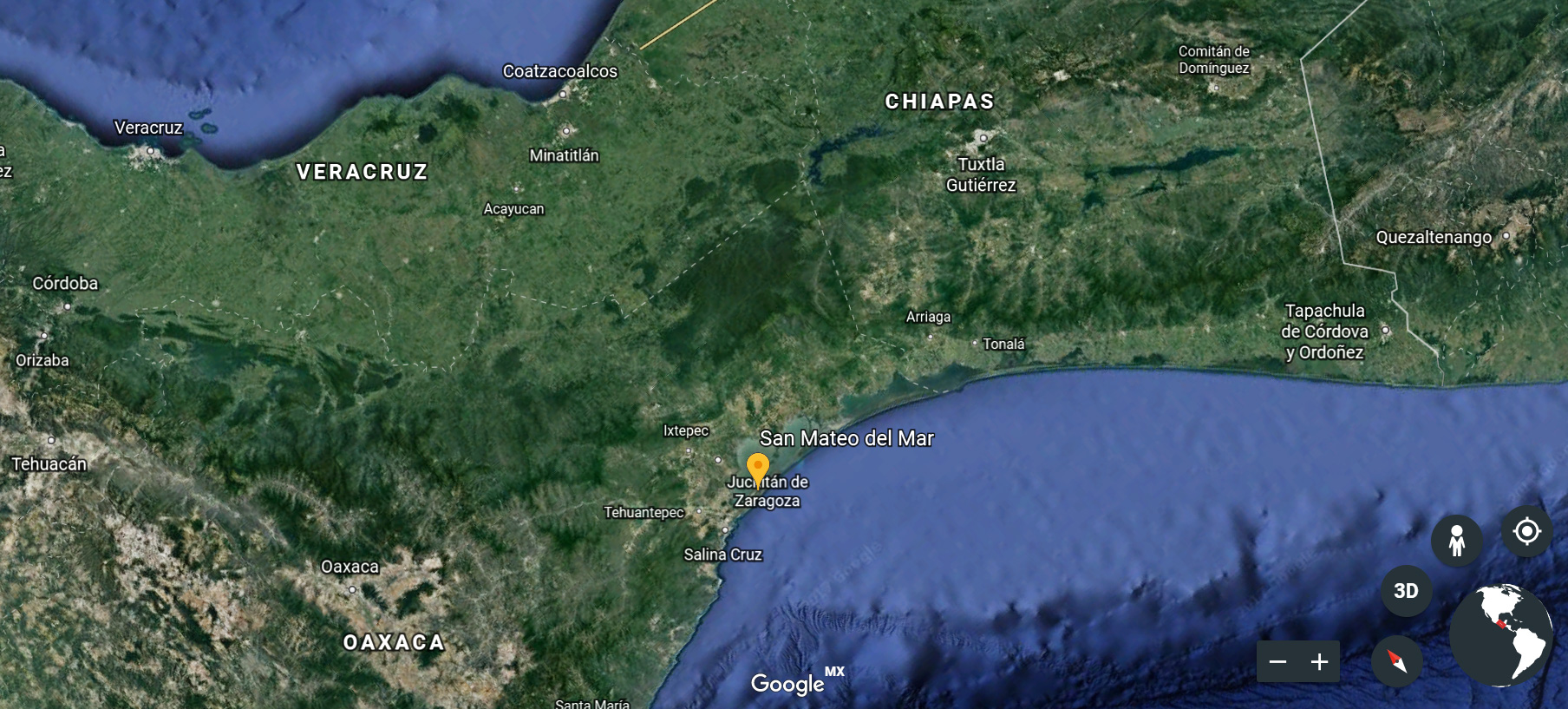
COMMUNITY DESCRIPTION
San Mateo del Mar is considered the second most marginalized municipality in Oaxaca State and the 12th nationwide. It is home to the people from the Ikoots ethnic group, commonly known as Huaves. There are 14,252 people in the municipality and their main economic activity is small-scale fishery.
PROBLEM ADDRESSED
On September 7th 2017, an 8.2 earthquake in the Richter scale hit the States of Oaxaca and Chiapas. According to the National Seismological System the most affected area was the Tehuantepec Isthmus located in Oaxaca, bordering Chiapas, both considered the most seismic of the country. 12 days later, another big earthquake hit the center of the country affecting this area as well.
According to the first statistics, there were at least 110,000 properties affected in Oaxaca and Chiapas, without considering the damage produced by the second earthquake.
In San Mateo del Mar, due to its location on a sandy ridge, the earth went through a liquefaction process during the earthquake damaging a total of 1887 homes and affecting approximately 9000 people (about 60% of the population).
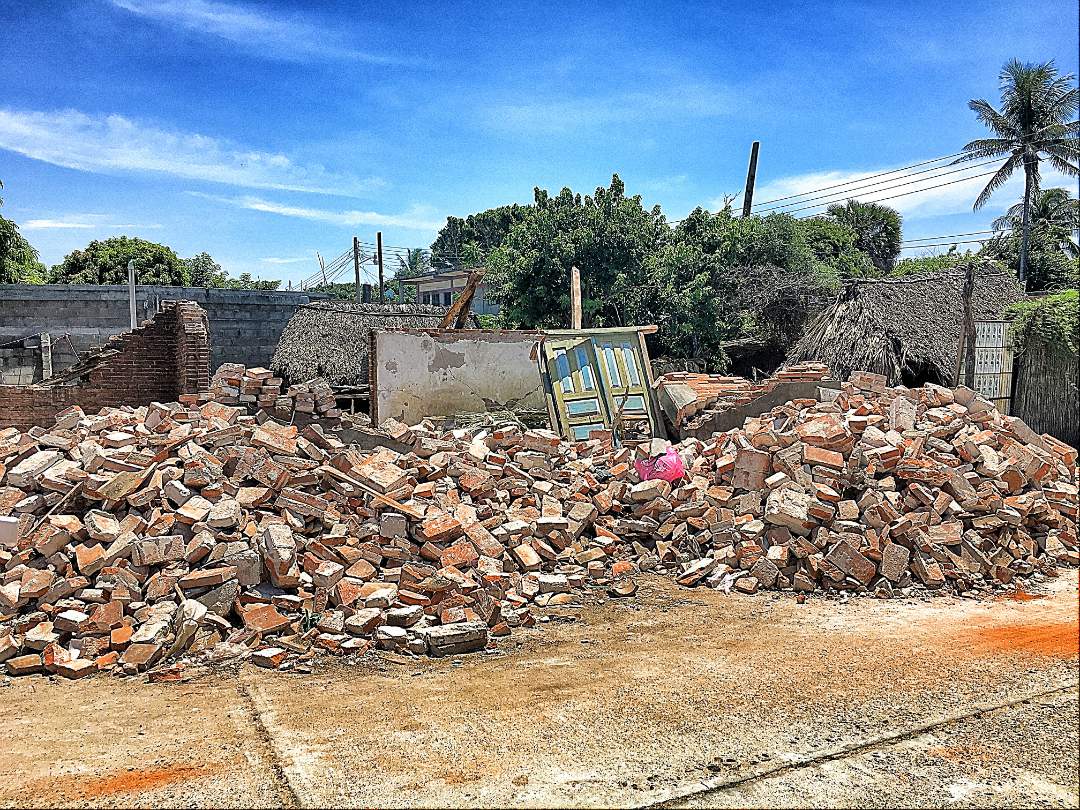
Besides the overall infrastructure destruction, one of the main concerns in San Mateo del Mar is related to water issues. The lack of services such as piped water and drainage systems has people depending on water wells to obtain their water, and use septic tanks for sewage. With the earth’s movement, many septic tanks broke and contaminated the water wells and the lagoon.
The immediate solution from the government was installing big drinkable water tanks in different areas of the main town, but someone from CONAGUA (the government department that deals with water issues) has told us that the government doesn’t have the capacity to solve the problem in the long run, and that the ideal would be to help with filtering systems since it is most likely that the groundwater aquifers are polluted.
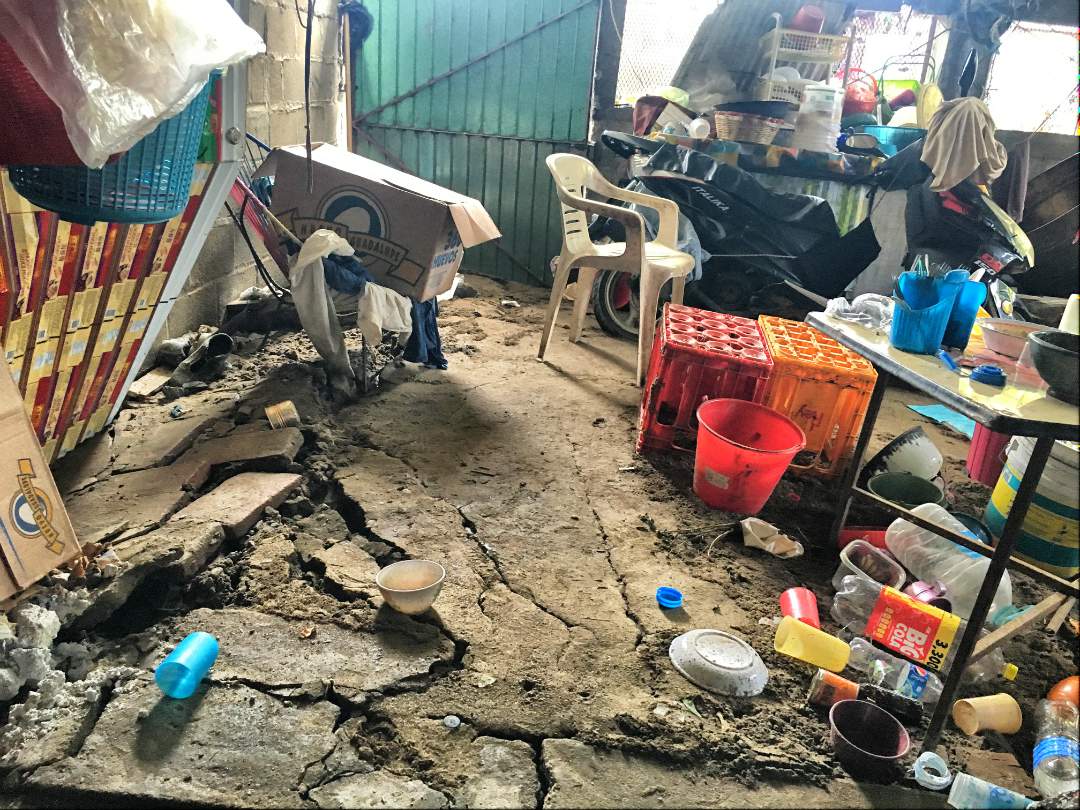
Three months after the earthquake there is still no permanent solution, just a few temporary bathrooms have been installed, and there’s started to be shortages in the water tanks. Many people are still defecating outdoors.
PROJECT DESCRIPTION
250 Sawyer Point One Bucket Filters are being delivered to San Mateo Del Mar. They will be distributed by Denise, along with her colleagues. There will be training to teach people how to properly use these filters and maintain them. With occasional backflushing, they last for 10 years or more and are guaranteed up to 1,000,000 gallons.
These 250 filters are to be distributed in the three main communities of the area: The “Third Section” or “Head Town” of San Mateo del Mar (Section most affected by the earthquake in the main town), San Pablo and Colonia Juarez.
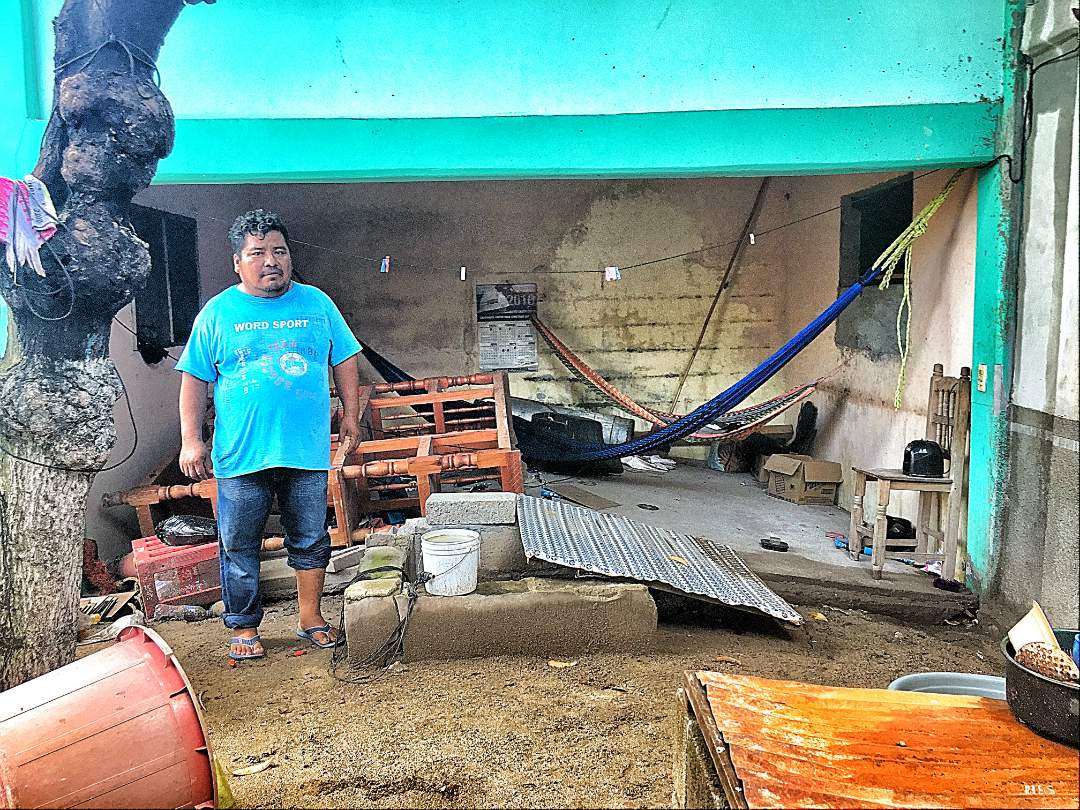
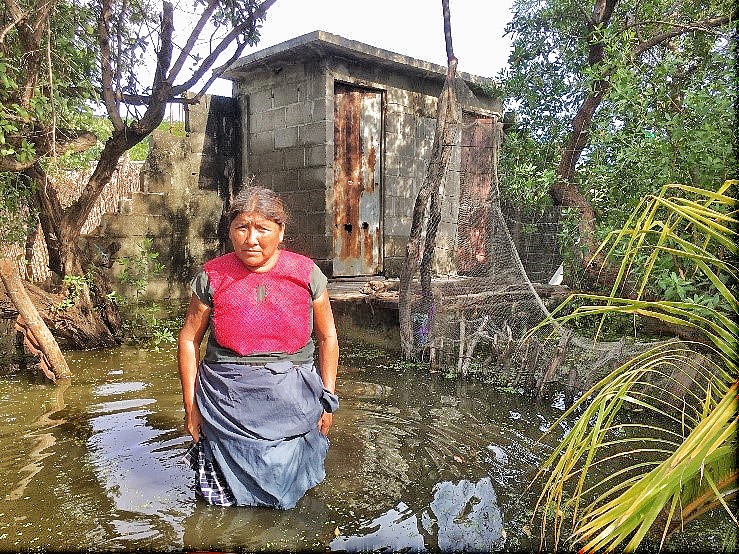
This effort will be completed by mid-January and will be aided by the arrival of Sam Hardy and Nate Jones, our wingsuit flying daredevil friends from Project Base. Water Charity has been building a partnership with them for a couple of years now, and the fact that they were flying nearby in Mexico and are friends with Denise created a perfect situation for them to come and lend a hand. We expect they will gather some of their famously stellar footage, so check back!
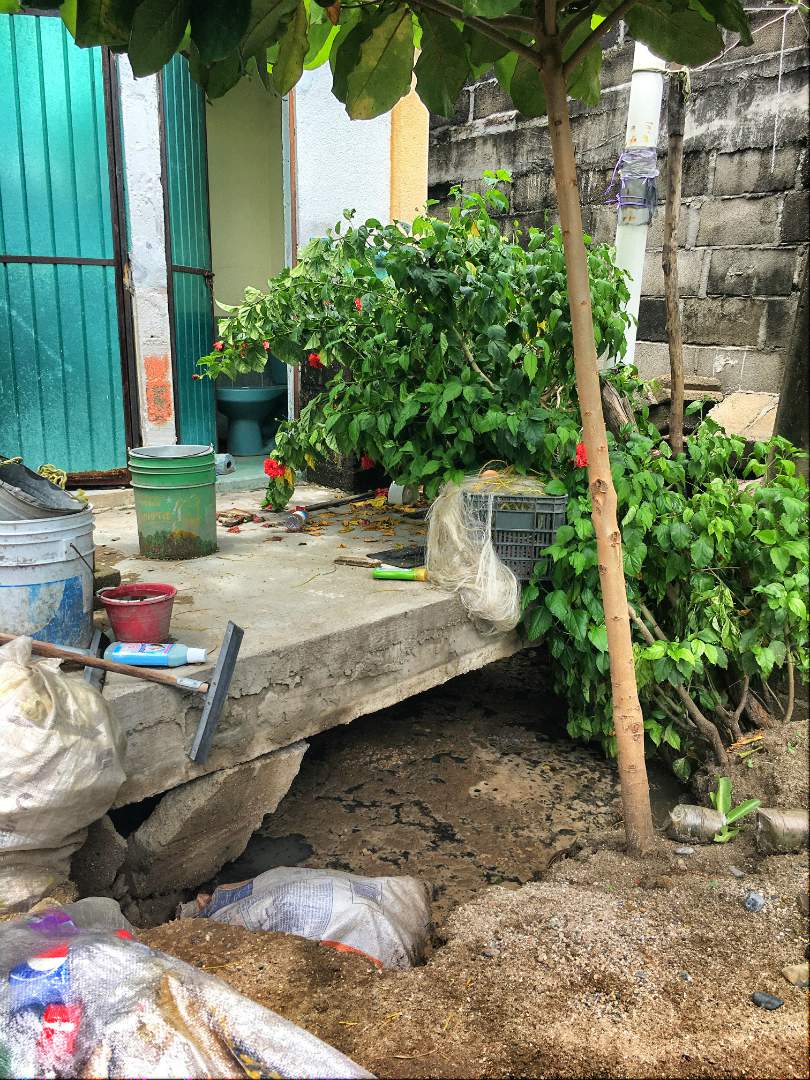
Since September 11th, Cultural Anthropologist Denise Lechner and Pediatrician Anja Widmann have been in San Mateo del Mar to do relief work. Since then, they’ve been working in the three main communities affected: The Head town of San Mateo del Mar and the neighborhoods of San Pablo and Colonia Juarez.
Denise and her team, have continued to help with temporary shelters, workshops to make cots and distribution of staples and other necessities.
There have been a small number of filtration systems received in the area, that were installed in households, but the filters WC is donating will make a big difference, as the vast majority of people are still dealing with unimproved water sources.
We’ve managed to have a permanent team in San Mateo helping us with the distribution and the follow-up of our projects while we are not in the community. The way the workshops are designed, it allows the people who received the training, to teach others on the same subjects, reaching a much larger amount of people. We’ve been working mainly with schools, and with organized groups in the small sections or neighborhoods.
PROJECT IMPACT
While the initial filters would be installed in schools that need them, and health centers, we’ve noticed that the people suffering most with the water problems live far away from these places… so we are organizing three or four neighboring families to receive each filter. This way we would be impacting a total of at least 2250 to 2,500 people since families are large.
VOLUNTEER DIRECTING PROJECT
Denise Lechner
MONITORING AND MAINTENANCE
The filters are to be installed in the first couple of weeks of January, and we will do a couple of workshops in two or three communities for people to learn how to use and care for them. The women of the community already hold regular meetings and are working with our team, so this will be a relatively easy task. The filters themselves require very little maintenance. Occasional backflushing with the included backflush syringe to remove sediment build-up is all that is required. Otherwise, the filters are quite robust and can last for 10+ years without issue.
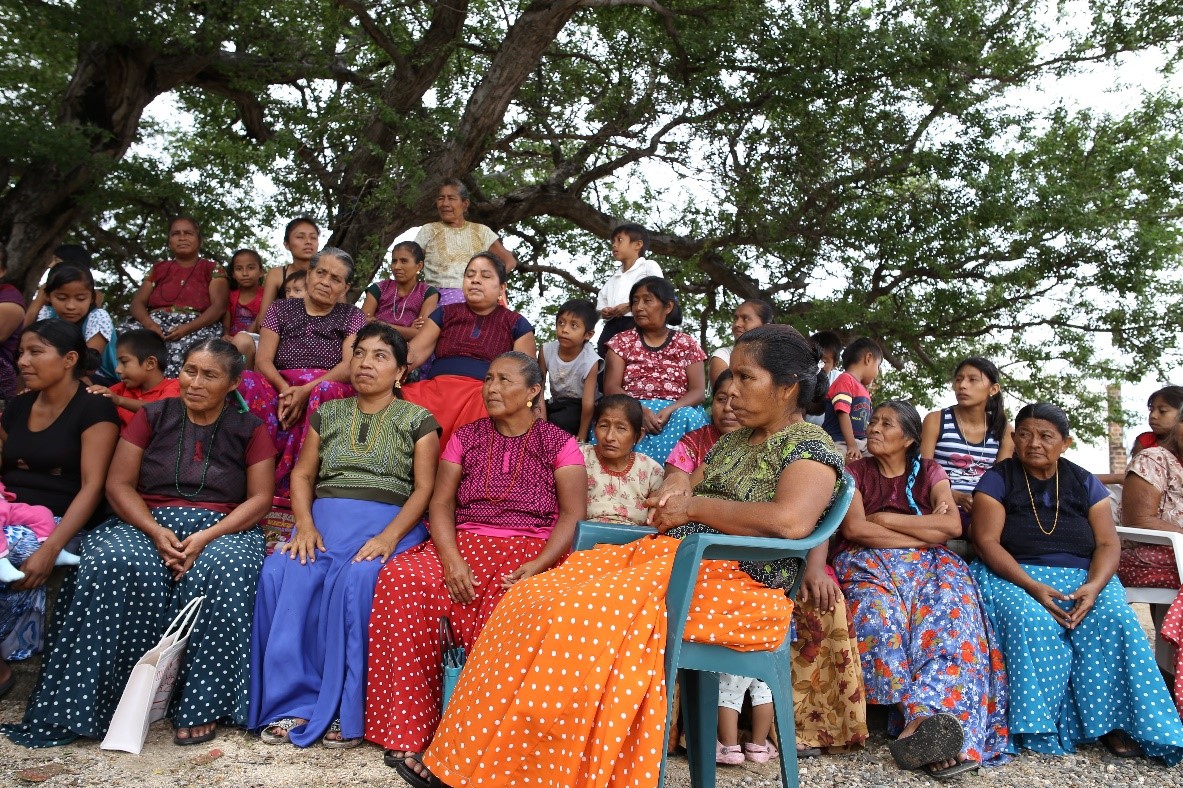
The initial workshops are connected to the distributions, and then our permanent team in the community will be going to check their use and issues that may arise. Follow-up pictures of these visits will follow.
COMMENTS
This project is part of our Filters For Life Program, and relies on the Sawyer Hollow Membrane Water Filter technology.
This project has been funded by the Paul Bechtner Foundation. Please contribute to our Filters for Life program using the Donate button below, and your donation will be used for our next water purification project.
Conclusion Report for the Oaxaca Earthquake Relief & Water Filter Project – Mexico
To read about the beginning of the project, CLICK HERE.
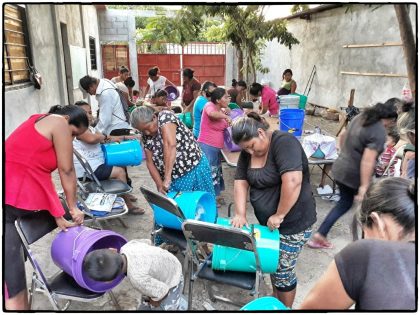
This filter distribution project was successfully finished despite the fact that we suffered many unfortunate delays. The main reason was that the filters were retained in customs after their shipment. Due to an only moderately rare combination of corruption, bureaucracy and ineptitude, our supply of filters languished while people suffered. It took a lot of hard work, patience, and pressure from the local government officials in Oaxaca to get them out.
For this reason, once the filters arrived in the community, several of the places we originally intended to help had already solved their wells’ pollution problem themselves. We were in contact with World Vision (who had also been distributing Sawyer filters in San Mateo del Mar and Colonia San Pablo, areas where we were originally planning on helping) to see where filters were still needed. We decided to focus on Colonia Juarez, since this place was also severely affected by the earthquake, and nobody had attended the inhabitants at all. It is also the second-largest town in the municipality.
Report from Denise:
With a great deal of perseverance, we managed to get the filters released from customs and didn’t have to pay any of the exorbitant (criminally so) fees they were trying to extort from us. I won’t go into the comedy of errors that led up to this. Let’s just say that many officials don’t actually care if humanitarian work gets done for “their” people, but are far more interested in lining their own pockets when they see the opportunity.
We managed to obtain and distribute a portion of the filters at the time of the Earthquake and those were installed without incident. However, because of the delays in retrieving the majority of the filters, there were other obstacles that arose. As time went on people returned to their daily lives and stopped attending the projects related to the natural disaster emergency, so it became more complicated to coordinate the work with the local team. They had resumed their daily work and we had to adapt to their available times.
Nonetheless, the project was completed, and we managed to address the water problem in the municipality with the joint efforts of several organizations.
The first part of the project was done when Sam and Nate, from Project Base, visited with us the communities, they taught Abel, our infield coordinator, how to use and install the filters. We went to a couple of houses to do some installations with him to see if he had gotten the idea. A few of the houses were very far away, we had to walk for 30 minutes to get there. It’s a home that had a water well and the family has 8 kids, they had lost everything during the earthquake and were not receiving any help from the government. Abel taught them how to use the filter, including the back flushing and how to do the cleaning process whenever needed.
We also went to visit a family of seniors that were really affected by the earthquake, it turned out that two different nonprofits had given them Sawyer filters that they were not using. It turns out that they had just distributed them without any sort of explanation, so they had no idea what they were for or how to use them. We decided to teach them how to use the filters they already had. We realized how important the proper training was, so the filters can be used at its fullest potential.
Since I don’t live in the community and only go there occasionally (to do the follow-up of the project), we decided that Abel would continue the training of the people to distribute the filters. We already had some buckets that were used in other projects and bought the rest that where needed to match the 250 filters.
We decided that Abel would do several workshops where he would teach heads of families, mothers, teachers, and health promoters so they could share the information in their neighborhoods before distributing the filters.
We started by attending the inhabitants of the most remote areas as they are undoubtedly the ones who have more difficulty accessing drinking water, concluding with the people from the neighborhoods that also had wells in the central areas of the municipality.
We attended people from the following neighborhoods: La Paz, El Pitayal and Colonia Juarez, to start with. Then, through the information given to us by some teachers, we found out that some neighborhoods of the main town hadn’t received filters either, so we gave a couple of more workshops to finish the distribution of the filters we still had left in Barrio Nuevo and Santa Cruz neighborhoods.
We finished the distribution of the 250 filters in September with the proper training which included how to install the filter, how to do the proper maintenance and cleaning for it to last the 10 years it’s intended for. We also give information related to the need of drinking clean water in order to avoid stomach issues, the importance of water as a natural resource and as a universal human right.
Water Charity would like to thank Denise for her heroic efforts in making this project happen. We would also like to thank Abel for his tireless work on this, as well as the various other people who helped procure, assemble and distribute the filters. Finally, we would like to thank our friends Sam & Nate for pushing to make this project a reality.
